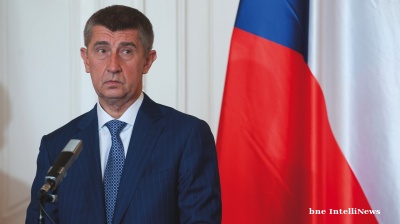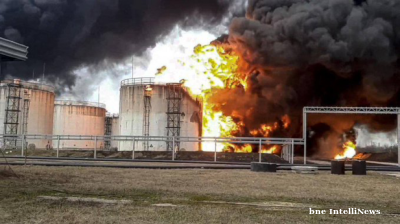 The spike of industrial output growth in February trumped the consensus range and suggests an acceleration of GDP growth from 0.7% year on year ( y/y) in January to 1.0-1.5% y/y in February, depending on households. The key reason other than calendar factor seems to be a spike in the production of passenger railway cars, which could be one-off
The spike of industrial output growth in February trumped the consensus range and suggests an acceleration of GDP growth from 0.7% year on year ( y/y) in January to 1.0-1.5% y/y in February, depending on households. The key reason other than calendar factor seems to be a spike in the production of passenger railway cars, which could be one-off
Acceleration of industrial output from 1.1% y/y in January to 4.1% y/y in February came as a very positive surprise, given that the Bloomberg consensus forecast range was 0.8-2.3%.
We cautiously expected acceleration to 1.6% y/y assuming the positive statistical effect of an extra workday in February 2019 vs February 2018 at around +1.0 percentage point masking some deterioration of the underlying industrial activity.
Given that the industrial output accounts for around 25% of Russian GDP, the actual industrial result implies an acceleration in the GDP growth from 0.7% y/y in January to 1.0-1.5% y/y in February, depending on the household activity indicators to be released later this week.
We note, however, that the strong spike in industrial output does not seem to be reflected in the budget or banking sector trends released so far. According to the Bank of Russia, corporate loan growth showed an only moderate acceleration from 9.5% y/y in January to 10.4% y/y in February, which net of FX revaluation effect translates into 5.1% and 6.1% y/y, respectively.
The federal budget spending, according to the Finance Ministry, did accelerate from 1% y/y in January to 10% y/y in February (preliminary data, likely to be downgraded later), however, that spike was driven primarily by higher state spending on healthcare, pensions and other social benefits. The unclear sources of financing cast doubt on the broad-based nature of the industrial pick-up and suggest that the structure of growth requires a closer look.
On the top-down level, the key driver of February's acceleration was the manufacturing sector (accounts for 50% of the overall industrial output), which showed 4.6% y/y growth in February vs. 1.0% drop in January. The remaining sectors showed either a very moderate acceleration or a small slowdown. Having looked deeper into the manufacturing sector performance one can see that most of the items show very moderate acceleration, which can be attributed to the above-mentioned calendar factor.
The only sector that stands out is the production of railway transport (accounts for around 3% of the overall industrial output), where the production of passenger railway cars posted a 35% y/y boost in February after a 20% y/y drop in January. Therefore, this volatile item might have contributed to up to 1.5 percentage point of the industrial output acceleration in February vs. January.
While we take the spike in industrial output positively, we note that out of 3.0 percentage point acceleration in the growth rate in February vs. January, 1.0 percentage point was brought by the calendar factor, and up to another 1.5 percentage point was thanks to the spike in railway car production. With a lack of acceleration in corporate lending or industry-focused budget spending, the acceleration in the industrial output so far does not appear to be broad-based. We continue to expect a deceleration of industrial production in 2019 vs. 2.9% seen in 2018.
Opinion

COMMENT: ANO’s election win to see looser Czech fiscal policy, firmer monetary stance
The victory of the populist, eurosceptic ANO party in Czechia’s parliamentary election on October 6 will likely usher in a looser fiscal stance that supports growth and reinforces the Czech National Bank’s recent hawkish shift.

COMMENT: Ukraine's drone attacks on Russian refineries have probably reduced throughput by 30.4%, less than headline figures suggest
Ukraine has been hitting Russian refineries and caused a fuel crisis that has spead across multiple regions. The headline figure is that oil refining has been reduced by 38% since August, but digging into it and the reduction is likely less.

MACRO ADVISORY: The unintended consequences of Western sanctions
Since 2014, Western nations have hit Russia with a total of 26,655 sanctions (to mid-September 2025), with 23,960 coming after February 2022. The largest target group, with 13,611 sanctions, is state officials, business owners, and oligarchs.

PANNIER: Few will mourn passing of Turkmen Iron Lady Atajanova and Uzbek Grey Cardinal Jurabekov
Their deaths seem to have been conveniently overlooked for the most part by the authorities of today.
_Cropped_1759411324.jpg)

